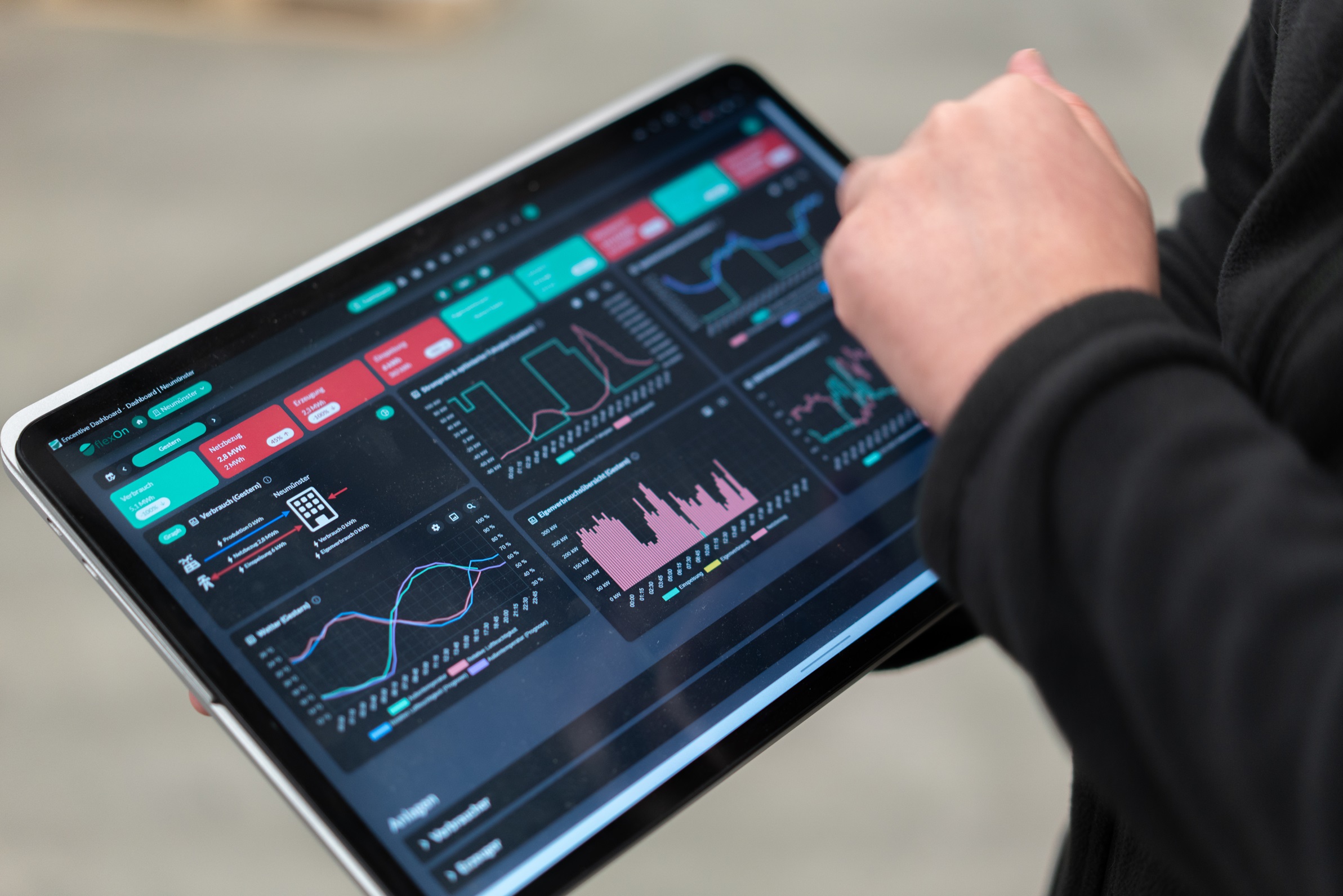How to recognize a good battery simulation?
More and more companies are planning to invest in battery storage systems. Whether to cut peak loads, optimize self-consumption or as part of a multi-use approach: Expectations are high. But storage is bought too often before it is clear what it can really do in a specific application. A well-founded battery simulation can prevent just that.

What is a battery simulation?
A battery simulation is a digital analysis tool that makes the effects of a planned storage investment visible even before it is made. Based on real consumption data, dynamic price signals and realistic usage scenarios, it is possible to determine which storage strategy makes economic sense for a company. This allows companies to make well-founded decisions instead of relying on assumptions.
Why battery storage systems are gaining in importance?
Industrial battery storage is more than just a topic of the future – it is becoming a decisive component of modern energy strategies. But why is the investment worthwhile right now? The expansion of renewable energy sources is constantly progressing – but their availability fluctuates. Sometimes there is too little electricity available, sometimes it is in abundance – with correspondingly severe price swings. It is therefore becoming increasingly important to store electricity when it is available cheaply and in large quantities from renewable sources. According to one study by the Institute of Energy Economics at the University of Cologne does the rise volatility on the electricity market – an environment in which flexible storage solutions are becoming increasingly important.
In addition, there are new regulatory incentives to making energy consumption more flexible, the expansion of sector coupling and company-specific requirements that make battery storage economically attractive for many companies. BESS and other types of storage help with:
- Peak shaving
- Optimizing self-consumption
- Smart energy management based on price signals from the day-ahead or intraday market
- Stabilization of the power grid through short-term compensation payments
But the requirements are highly individual: consumption patterns, self-generation, electricity cost structure and purchasing strategy differ from company to company. This makes planning complex and battery simulation all the more important.
What makes a good battery simulation stand out?
A battery simulation is helpful for companies if it is practical, data-based and can be used strategically. Companies can recognize it by the following aspects:
1. Digital image of your energy system
A good simulation realistically depicts a company's location: historical load patterns, current electricity price structures, PV generation and planned developments are incorporated. The simulation shows energy flows as if the storage system were physically on site. This allows you to monitor potential storage savings every day.
2. Scenario diversity and goal orientation
Whether it’s peak shaving, self-consumption optimisation, or pursuing multiple goals simultaneously (multi-use), different use cases can be simulated. Target parameters such as profit, CO₂ reduction or, depending on the application, a higher degree of energy autonomy can be measured and compared.
3. Economic feasibility analysis
The battery simulation provides key performance indicators such as payback period, savings potential and levelised cost of electricity (LCOE). Operating costs with and without storage can be directly compared, offering a clear picture of financial viability.
4. High-resolution data and realistic parameters
The simulation works with quarter-hour intervals, taking into account charge and discharge cycles. It illustrates how factors such as storage capacity and charging power influence the overall result.
5. Concrete recommendations for action
A robust battery simulation answers essential questions: Which storage technology best suits your company? What capacity and power rating do you need? And how should the storage system be controlled after installation to fully unlock its potential?
Three key learnings from practice
Theory and practice are not the same. That’s why we’ve compiled insights from various simulations conducted with companies across multiple industries:
- Real system dynamics matter: Static models are insufficient. Only dynamic simulations reveal the true benefits, since electricity consumption and generation fluctuate throughout the day. A model must capture these variations to deliver realistic results.
- High-resolution data is essential: It forms the foundation for sound decisions. Quarter-hourly data reveals exactly when load peaks occur or when PV output is fed into the grid — both crucial for accurate system design.
- Sizing is not linear: The choice of capacity and charging power has complex effects on profitability and savings. A larger storage system is not automatically better — sometimes a smaller, more precisely tailored solution delivers the greatest economic benefit.
Conclusion: Simulation before investment
A good battery simulation is more than a simple calculation tool – it’s a strategic planning instrument that minimises risk, ensures economic clarity and secures investment decisions. Companies investing in storage should combine simulation and optimisation from the start to achieve shorter payback periods, higher ROI and maximum operational flexibility.
Are you planning to install a battery storage system? We’re happy to support you with a tailored simulation to guide your decision-making. Contact us to arrange a non-binding initial consultation.




















